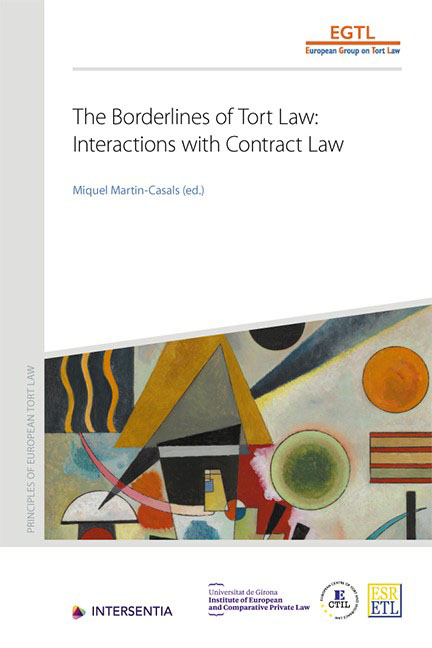Book contents
Questionnaire and Hypothetical Cases
Published online by Cambridge University Press: 15 November 2019
Summary
QUESTIONS
TRACING THE BORDERLINES
A. How and why does your legal system distinguish between tort and contract?
B. Does your system recognise a ‘grey zone’ between the two (as, for instance, in the case of culpa in contrahendo)?
C. Are there common or different rules regulating tort and contract?
D. Do courts apply rules which are common to tort and contract in different ways?
MAIN DIFFERENCES BETWEEN TORTIOUS AND CONTRACTUAL LIABILITY
A. What are the differences in the regulation of liability based on tort and liability based on contract as regards the foundations of liability?
1) The role of intention
2) The roles of wrongfulness and fault and their variations
3) The role of strict liability
B. What are the differences as regards causation (both causation in fact and scope of liability)?
C. What are the differences as regards remedies? Namely:
1) The degree of certainty of the damage
2) Compensation for non-pecuniary loss
3) Compensation for loss of earnings and for loss of chance
4) Restitutionary damages
5) Aggravated and exemplary (or punitive) damages
6) Others (such as specific performance, injunctions, etc)
D. What are the differences as regards the recoverability of ‘pure economic losses’ between contracting and non-contracting parties?
E. What are the differences as regards liability for others? Namely:
1) Liability for auxiliaries and for independent contractors
2) Liability for the legal representatives or organs of a company
3) Liability of representatives of natural persons
4) Liability of the auxiliary/organ itself
F. What are the differences as regards liability in the case of multiple tortfeasors/breaching parties?
G. What are the differences as regards the persons who may be protected under tort/contract?
H. What are the differences as regards defences (in particular, in the case of contributory negligence)?
I. What are the differences as regards limitation periods (in particular as regards length of periods, ‘dies a quo’, liability arising from a crime, specific rules, etc)?
J. What are the differences as regards proof?
K. Are there any other differences?
L. What are the reasons for all these differences?
- Type
- Chapter
- Information
- The Borderlines of Tort LawInteractions with Contract Law, pp. 7 - 12Publisher: IntersentiaPrint publication year: 2019

